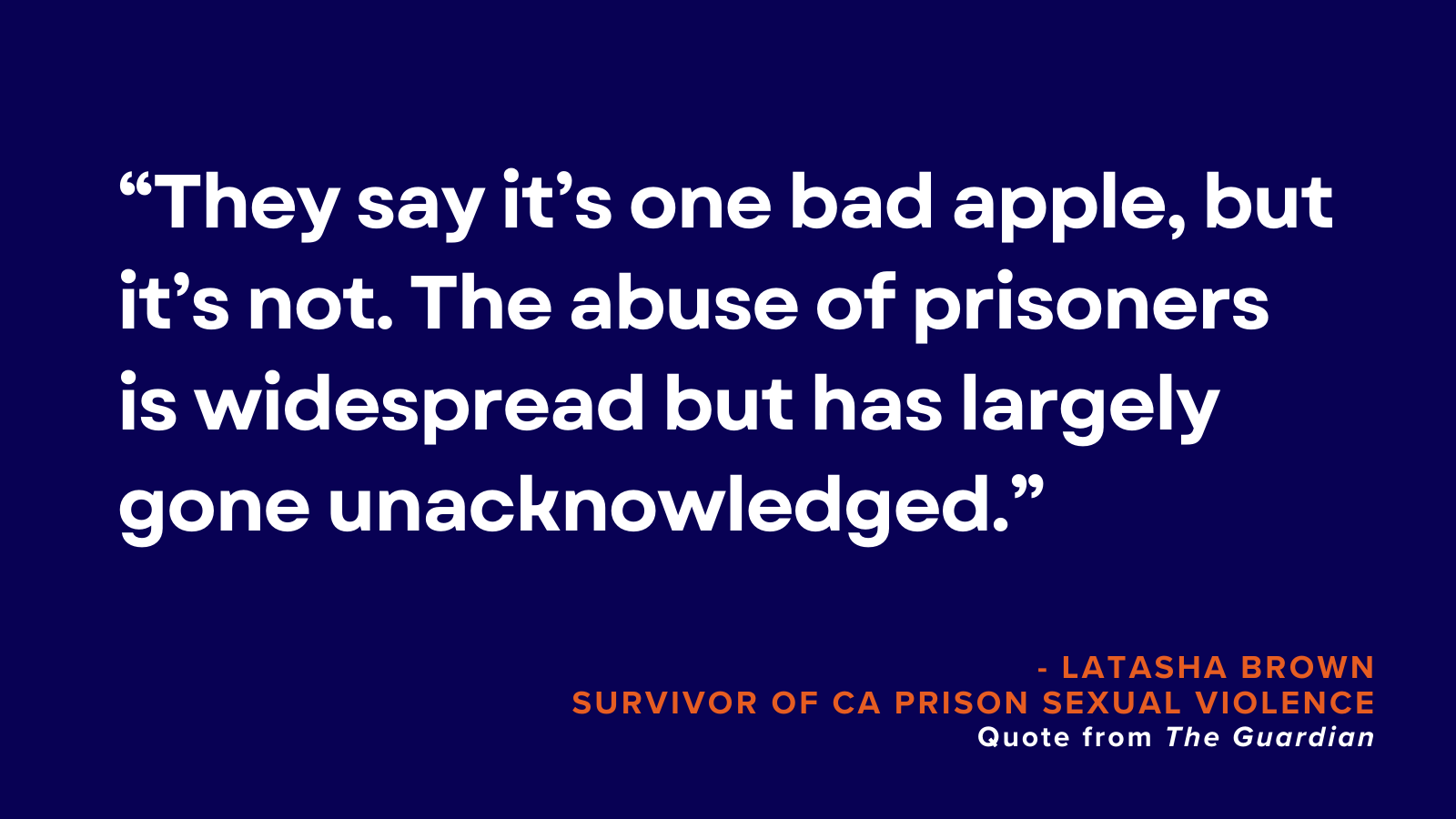ACTION ALERT - Stop CDCR Sexual Abuse
One prison guard, 96 abuse charges; women targeted for over a decade

TW: Sexual assault
Systemic sexual violence and abuse of incarcerated women exists in prisons across the US. Sexual violence at the hands of prison guards is institutional, horrifying, and an inherent part of prison systems and culture. Across the United States, government surveys have estimated that more than 3,500 women are sexually abused by prison and jail staff each year, and that federal employees have abused women in at least two-thirds of federal women’s prisons.
The Guardian published a series of investigative reports by Sam Levin that documents the crisis of sexual assault in California prisons. This investigation, records and interviews suggest the California prison system let CDCR prison guard Gregory Rodriguez get away with rampant sexual abuse, starting as far back as 2014, while his victims were punished.
Part 1: One prison guard, 96 abuse charges: women say ‘serial rapist’ targeted them over a decade
Part 2: The women trapped in prison with their abusers: ‘They hold my life in their hands’
In May, now former officer Rodriguez was charged with nearly 100 counts of sexual violence. Authorities say Rodriguez is suspected of harassing, assaulting and raping at least 22 women in custody from 2014 to 2022, though court records and testimony from women and their lawyers suggest his abuse extends beyond the criminal allegations. Rodriguez has pleaded not guilty to all charges, and his lawyer did not respond to requests for comment.
Survivors are still speaking out, especially those still incarcerated, and are courageously doing so despite risks of further retaliation. Felony Murder Elimination Projects asks our supporters to express and share our love, respect and support of those survivors by taking the actions below.
- Access this toolkit "Stop CDCR Sexual Abuse - Advocacy toolkit" for downloadable social media graphics and sample tweets/posts.
- Sign on to this letter urging CDCr to end sexual violence in prisons.
You can sign as an individua,l or an organization if you can speak on behalf of one, to support survivors: - Read this letter.
b. Complete the form to sign on as an organization. For individuals, enter “individual” under organization and when asked if you have authority to sign on behalf of an organization, select “no”.










